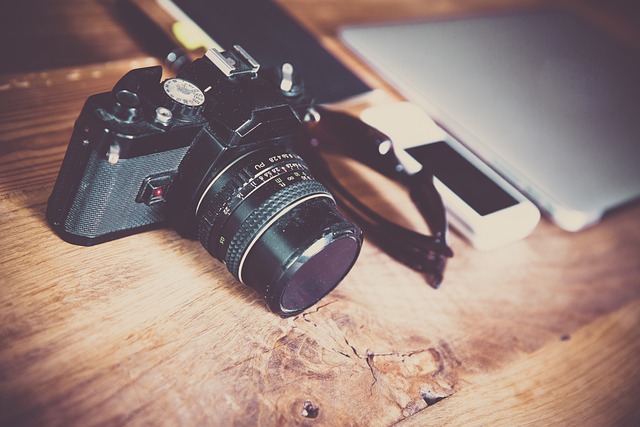
In the world of photography, Digital Single-Lens Reflex (DSLR) cameras have long been revered for their exceptional image quality, versatility, and creative control. As technology continues to evolve, the market is flooded with a plethora of DSLR options that cater to both professional photographers and enthusiasts. In this article, we’ll delve into the realm of DSLR cameras to explore the highest quality models available right now, ensuring that you can capture every moment with unparalleled excellence.
Introduction
DSLR cameras have stood the test of time as tools that empower photographers to capture moments in stunning detail and depth. Whether you’re a professional seeking ultimate control or an amateur looking to refine your skills, there’s a DSLR camera out there designed to meet your creative needs.
Key Considerations When Choosing a DSLR Camera
Before diving into the options, consider these essential factors:
- Intended Use: Determine whether you’re shooting professionally, for hobbies, or as a beginner.
- Sensor Size: Full-frame sensors offer better low-light performance and shallower depth of field.
- Megapixel Count: Higher megapixels yield more detailed images, but sensor quality matters too.
- Lens Compatibility: Ensure the camera supports a wide range of lenses for versatility.
- Advanced Features: Look for features like in-body stabilization, weather sealing, and customizable controls.
Leading Brands in the DSLR Industry
Nikon and Canon are often synonymous with DSLR excellence, boasting extensive lineups that cater to various skill levels and preferences. Other brands like Sony and Pentax have also made significant strides in the market.
Cutting-Edge Sensor and Image Processing Technology
Modern DSLRs harness advanced sensor technology and image processing capabilities to deliver exceptional image quality, reduced noise, and improved dynamic range.
Comparing DSLR Models: Full Frame vs. APS-C
The choice between a full-frame and APS-C sensor depends on your photography goals. Full-frame sensors excel in low-light conditions and produce shallower depth of field, while APS-C sensors are more compact and affordable.
Best Professional DSLR Cameras
For professionals demanding top-tier performance, cameras like the Nikon D6 and Canon EOS-1D X Mark III offer unparalleled speed, durability, and image quality, making them ideal for sports and action photography.
Top Enthusiast DSLRs for Advanced Amateurs
Enthusiast-level DSLRs like the Nikon D850 and Canon EOS 90D strike a balance between performance and price. These cameras offer advanced features, high megapixel counts, and robust build quality.
Entry-Level DSLRs for Beginners
If you’re new to photography, entry-level DSLRs like the Canon EOS Rebel T8i and Nikon D3500 provide user-friendly interfaces, guide modes, and interchangeable lens capabilities, helping you learn and grow your skills.
Optical Viewfinders and Live View LCDs
DSLRs offer the advantage of an optical viewfinder, allowing you to see the scene in real-time without digital delay. Live View LCDs provide a digital preview of the image, which is beneficial for composing shots.
High-Performance Autofocus Systems
Fast and accurate autofocus is crucial for capturing fleeting moments. DSLRs employ sophisticated autofocus systems with advanced tracking capabilities, ensuring sharp and clear shots.
Low-Light Performance and ISO Sensitivity
Low-light performance is a hallmark of DSLRs, especially those with larger sensors. High ISO sensitivity and noise reduction algorithms allow you to shoot in challenging lighting conditions.
Video Capabilities and Cinematic Features
DSLRs have also become popular tools for videographers. Look for cameras with 4K video recording, manual exposure control, and cinematic features like log profiles for post-production flexibility.
Wireless Connectivity and Remote Shooting
Modern DSLRs offer wireless connectivity options, enabling remote control, file transfer, and even live streaming through dedicated apps or built-in Wi-Fi capabilities.
Ergonomics and Build Quality
Ergonomics play a significant role in the overall shooting experience. DSLRs are designed with comfortable grips, intuitive button layouts, and rugged build quality to withstand various shooting conditions.
Conclusion
The landscape of DSLR cameras in 2023 is rich with options that cater to diverse photography needs. Whether you’re a professional seeking ultimate performance, an enthusiast pursuing creative endeavors, or a beginner taking your first steps, there’s a high-quality DSLR camera waiting to accompany you on your photographic journey.
FAQs
- Can I use my old lenses on new DSLR models? In many cases, older lenses are compatible with newer DSLR models from the same brand, but it’s essential to check for compatibility.
- Are DSLRs suitable for landscape photography? Yes, DSLRs offer excellent image quality and dynamic range, making them ideal for capturing the intricate details of landscapes.
- Do all DSLRs have weather-sealing for outdoor photography? Not all DSLRs come with weather-sealing, but many mid-range to professional models offer this feature for added durability.
- Can I use DSLRs for portrait photography? Absolutely, DSLRs provide the depth of field and image quality needed to capture compelling portraits.
- Are DSLRs heavy and bulky for travel photography? While some DSLRs can be larger and heavier, there are also compact and lightweight models suitable for travel photography.





